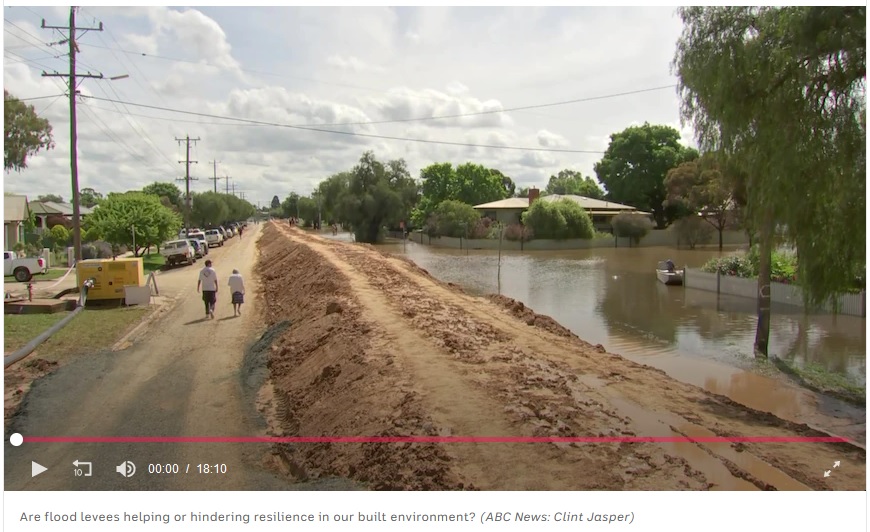Let’s take a closer look at flooding, engineering philosophies and urban planning
In case you missed it, last month we released our third discussion paper in a series that is looking at the potential role of wetland restoration in urban development, using the wallan wallan wetlands north of Melbourne as a case study.
In the weeks since, with major flooding continuing to present challenges across large swathes of south-eastern Australia, I have come across some interesting discussion featured in the media about this very topic that I think is worth sharing…
Firstly, this article in The Conversation touches on a theme that resonates very strongly with Nature Glenelg Trust’s approach to wetland restoration and water management generally – and that is to “work with nature, not against it”.
In urban or suburban built environments, where modern engineering approaches over the past 150 years have produced marvels that make daily life as we know it possible for millions of people, it can be tempting to think that we can redesign and even outsmart nature. But as the floods are reminding us, engineering has it limits, and nature offers some elegant solutions that are being successfully implemented elsewhere around the world.
As the authors, Penny Allan, Andrew Toland and Martin Bryant, state in their article:
“Many effective “nature-based” solutions run counter to traditional engineering works. For example, rather than engineer a river channel to make water move more quickly through an area, nature-based solutions modify or multiply river channels to accommodate variable water volumes. These approaches spread out and slow the flow of water and encourage it to soak into the ground before reaching the river.
Overseas, China makes “sponge cities” with urban wetlands and revegetated waterways. The Netherlands has removed dykes and widened river corridors as part of its Room for the River program. These strategies often require land to be rezoned and buildings removed. That’s a brave move in the face of urban growth pressures.
But these strategies also offer an opportunity to refocus cities, towns or even regions, by reintegrating nature and opening up new spaces for recreation, environmental regeneration and biodiversity. The independent 2022 NSW Flood Inquiry recognised just such an approach. Its report called for floodplains to be thought of as assets serving environmental, recreational and community uses while allowing space for flooding.”
As we explored in the NGT article last month, burrung buluk (Hanna Swamp) is a natural wetland feature that offers precisely this potential.
The second media item I am sharing is a really insightful discussion I heard on ABC Radio National, in their “Blueprint for Living” program while I was driving a few weeks ago. This short 18 minute discussion in a segment called the Flood Levee Effect is well worth a listen. You can also listen in the embedded audio player a little further below.
In this program, Brian Cook, Associate Professor in the School of Geography, Earth and Atmospheric Science at The University of Melbourne, steps us through the reasons (both historical and modern) for flooding risk increasing over time in engineered waterways and ultimately explores some of the options for helping to address this risk. Before doing so, he also explains a number of the inherent limitations of engineering approaches to flood mitigation, and also how those same engineering approaches can often have perverse and unintended economic, social, psychological and environmental impacts. As suggested by the name of this segment, the wicked problem he is highlighting is known as “The Flood Levee Effect”.
Of note, some of the ever-present economic and political forces described by Brian, which have a major influence on development in Australia, are also currently having a bearing on the plans being formulated by the various parties with an interest in the wallan wallan wetlands.
But enough from me, please grab a cuppa and have a listen – this is a worthwhile investment of 18 minutes of your time!


